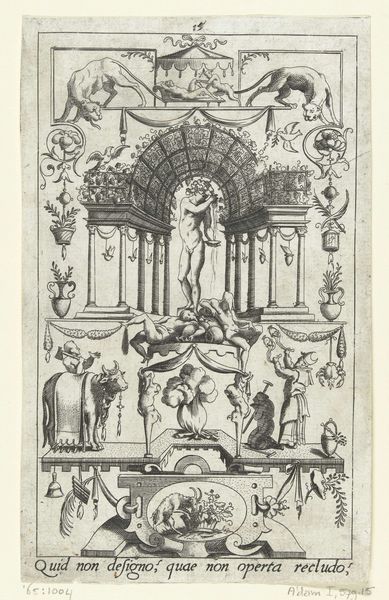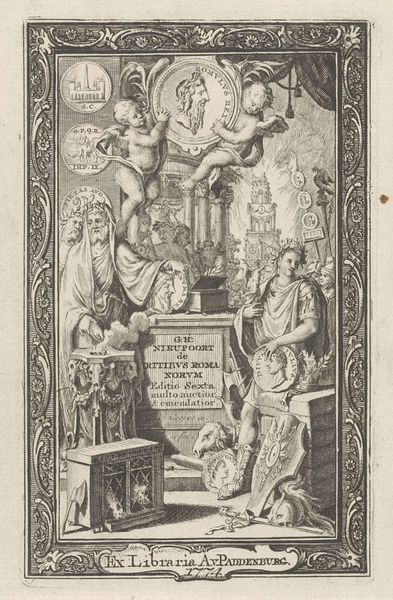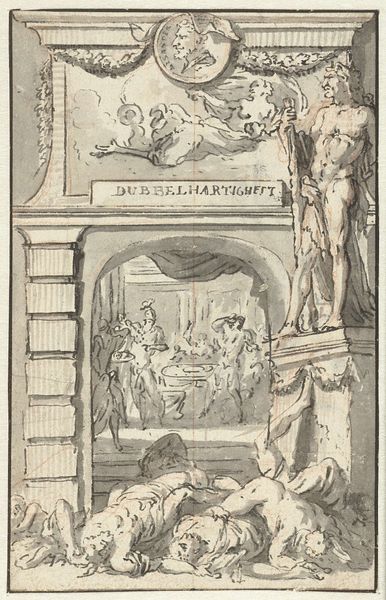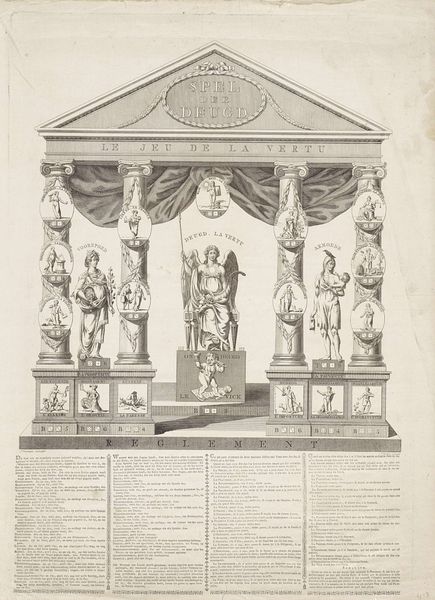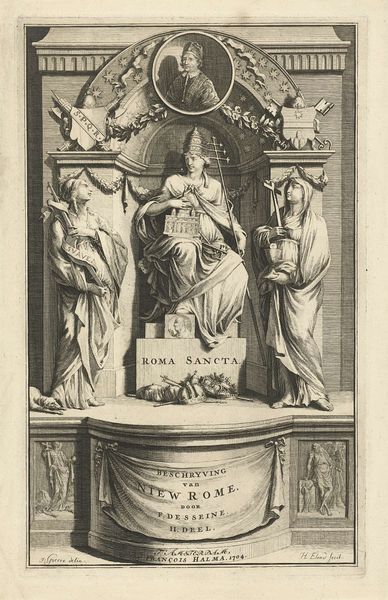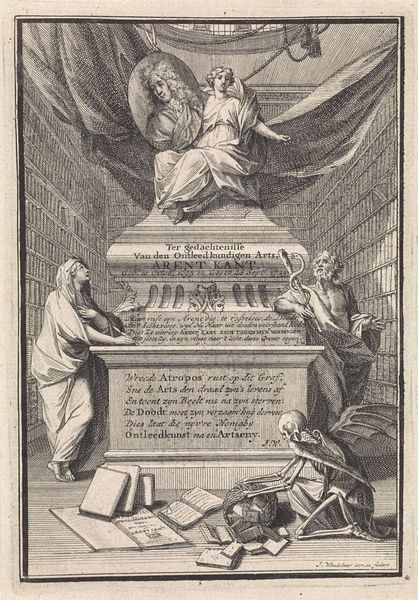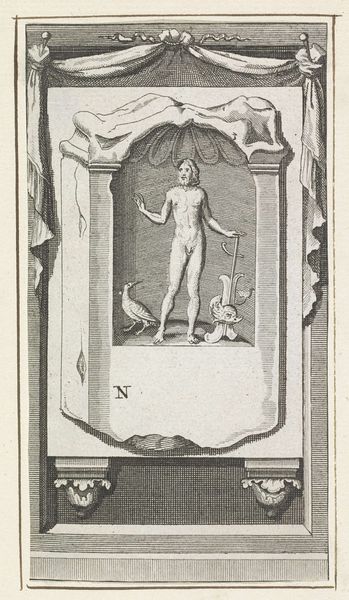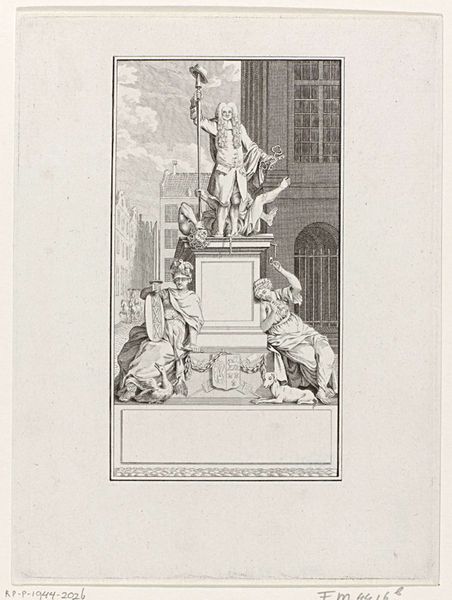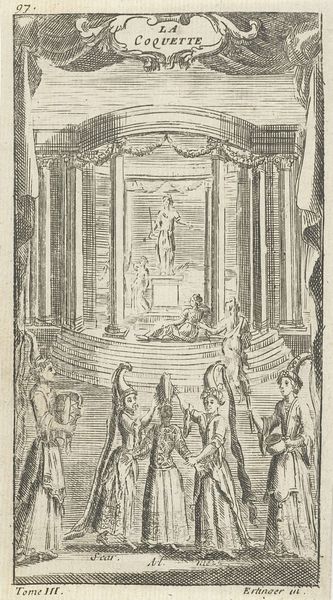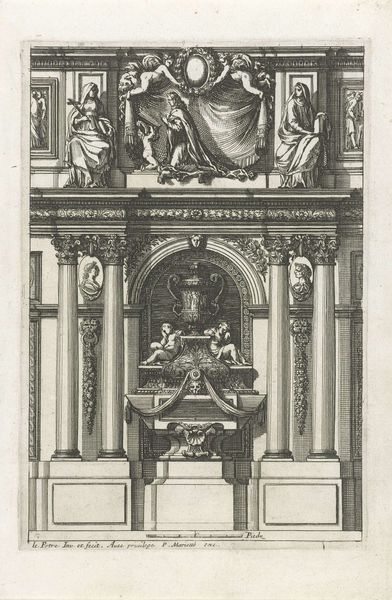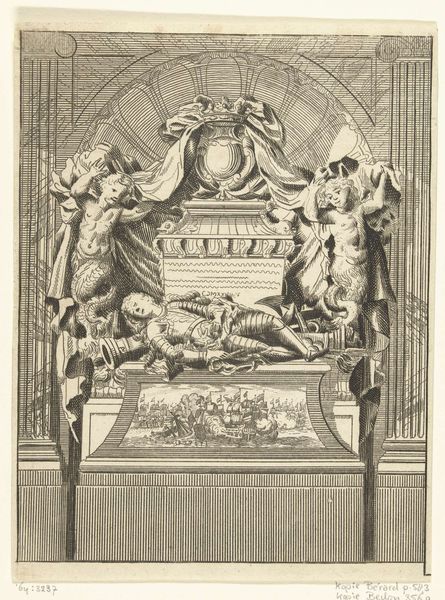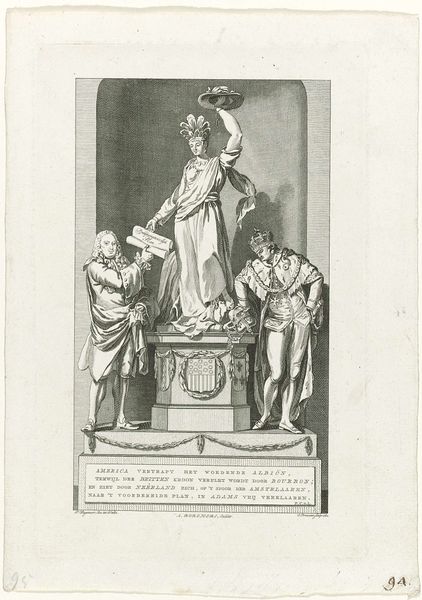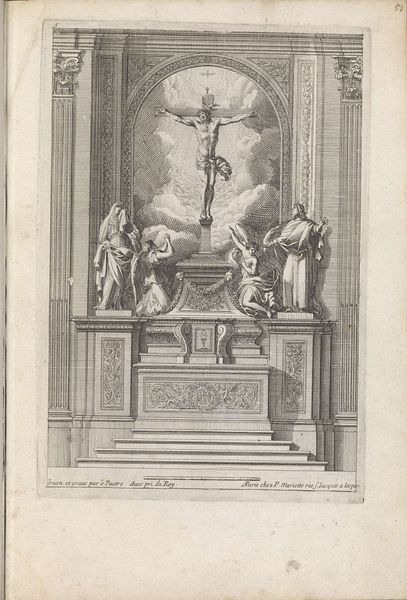
print, engraving
allegory
baroque
old engraving style
figuration
history-painting
engraving
Dimensions: height 129 mm, width 69 mm
Copyright: Rijks Museum: Open Domain
This is an engraving of a Jupiter altar found near Domburg. It is attributed to an anonymous artist. This work encapsulates a fascinating intersection of Roman religious traditions and local cultural identities in the Netherlands. The altar is dedicated to Jupiter, but notice the additional epithet "Texovisius." This detail provides insight into the integration of Roman and indigenous religious practices. It suggests that the Roman deity Jupiter was syncretized with a local god of the Texovii, a Germanic tribe inhabiting the coastal regions of the Netherlands. The altar may have been part of a larger religious site or temple complex where Roman and local deities were worshiped side by side. Consider the emotional resonance this altar may have had for the local population, and also what it represents about societal issues of cultural assimilation during the Roman period. What did it mean to blend Roman and local beliefs?
Comments
No comments
Be the first to comment and join the conversation on the ultimate creative platform.
